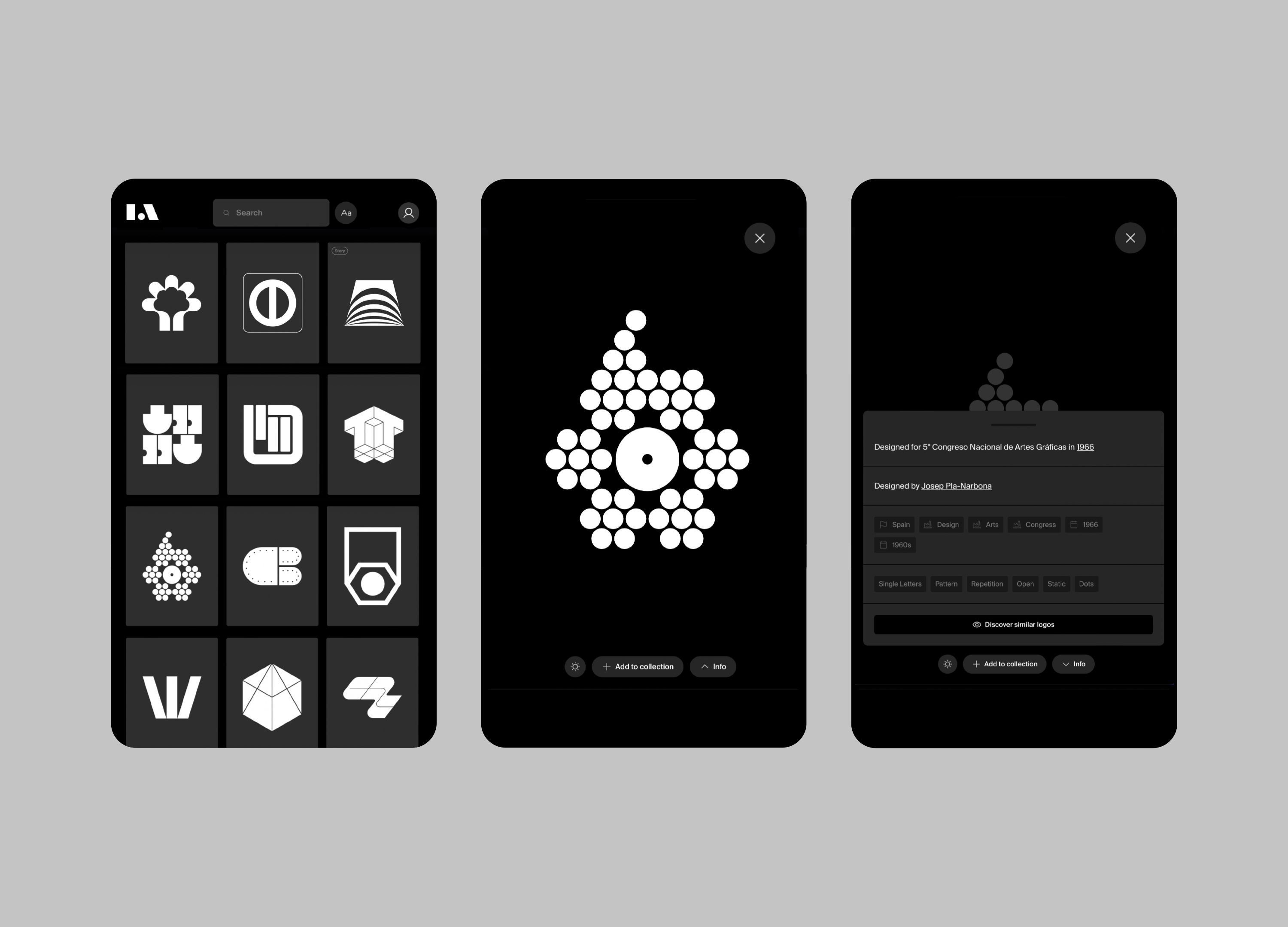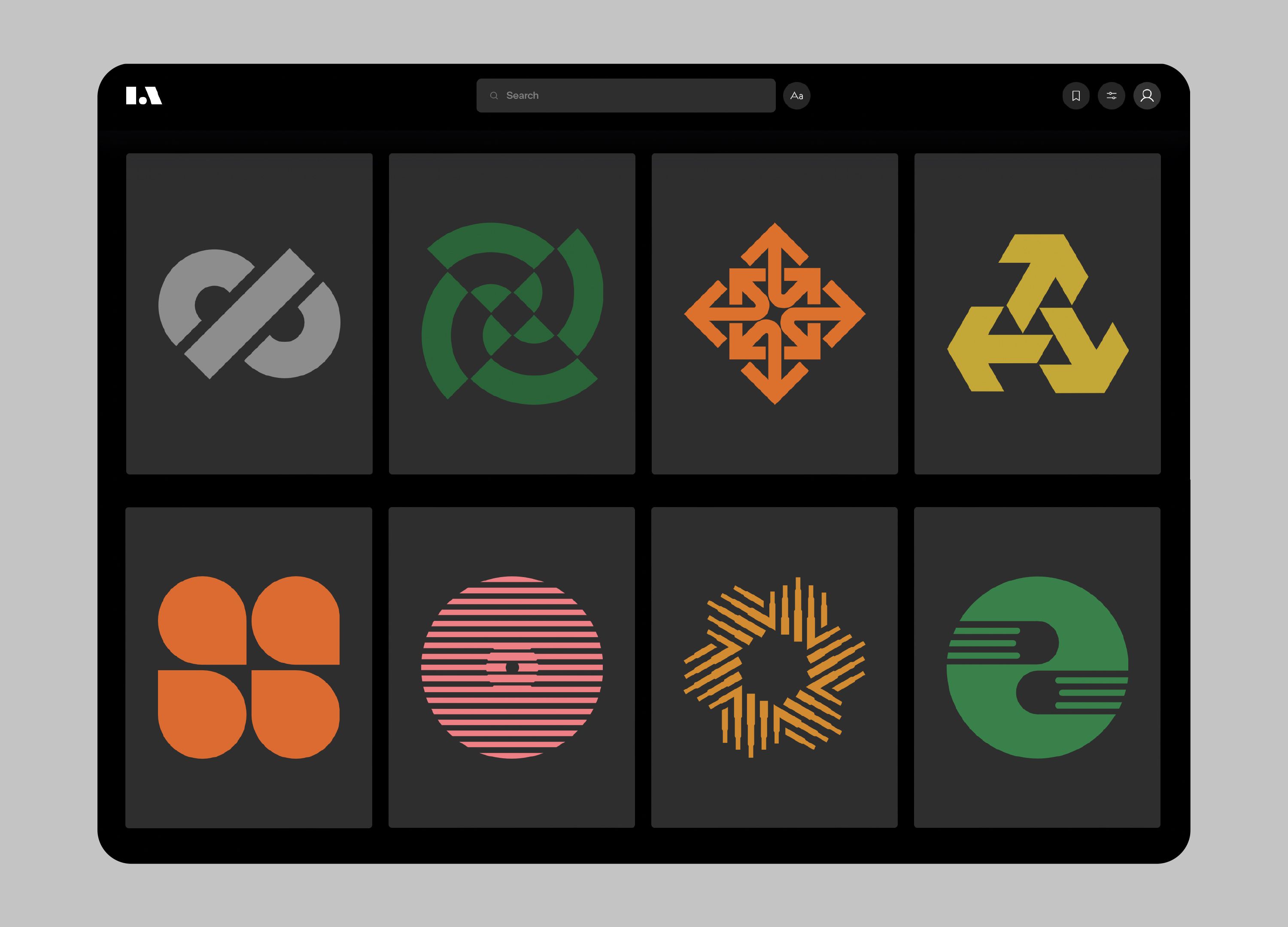Introducing LogoArchive
Opinion by Richard Baird Posted 11 January 2023
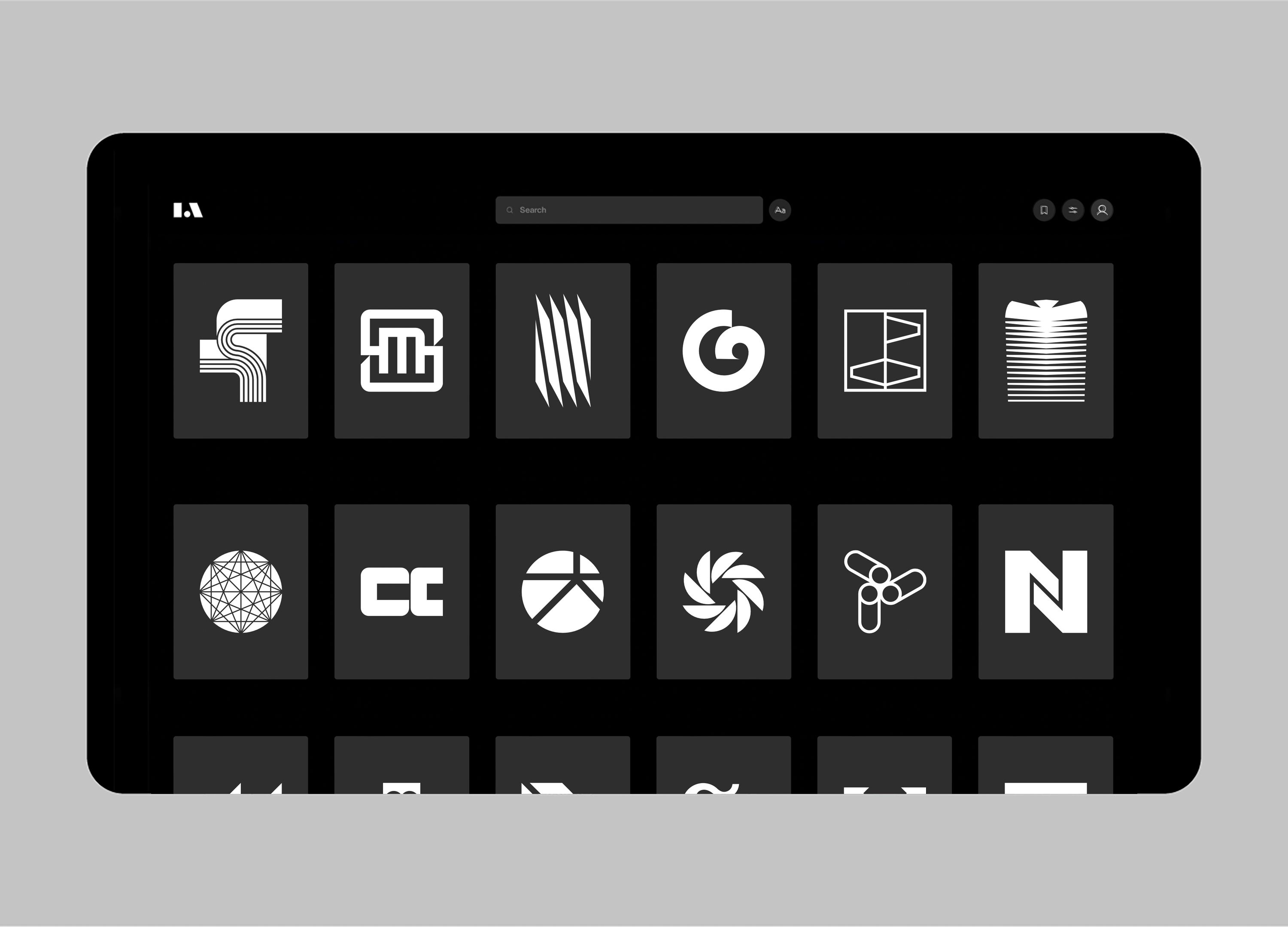
Introducing LogoArchive, a research tool from BP&O founder Richard Baird and designer and developer Christian Laufenböck.
Discover over 3000 modernist logos, carefully digitised and researched. See 300 of these in their original colour and read short stories behind 100 more. Find inspiration using a multiple search terms and tags. Collate logos into collections for projects, manage these collections for projects and research, and collaborate with shared and public boards (coming soon). Filter using tags and open up your search with logoArchive’s discover similar logo feature. Personalise your grid for detail or archive view, and switch from light to dark mode for late night searches. And do all this between your desktop and mobile device. Subscribe here or keep scrolling for more.
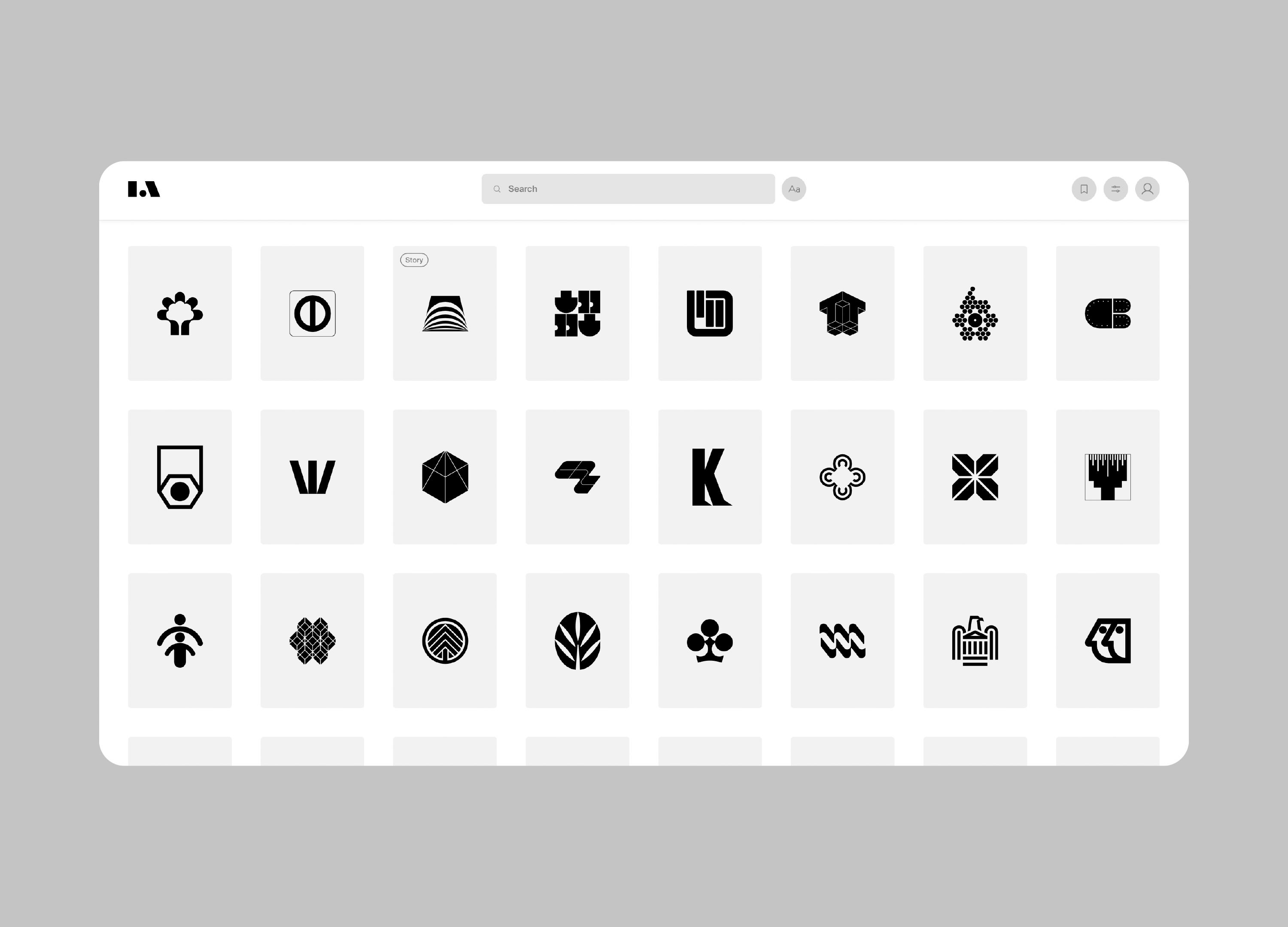
LogoArchive is a logo book like no other. It constantly grows, with new logos added every weekday, with a special interest in previously under-represented countries. Mix stylistic or contextual queries for new search results, freeing logos from the limiting category definitions of the printed page.
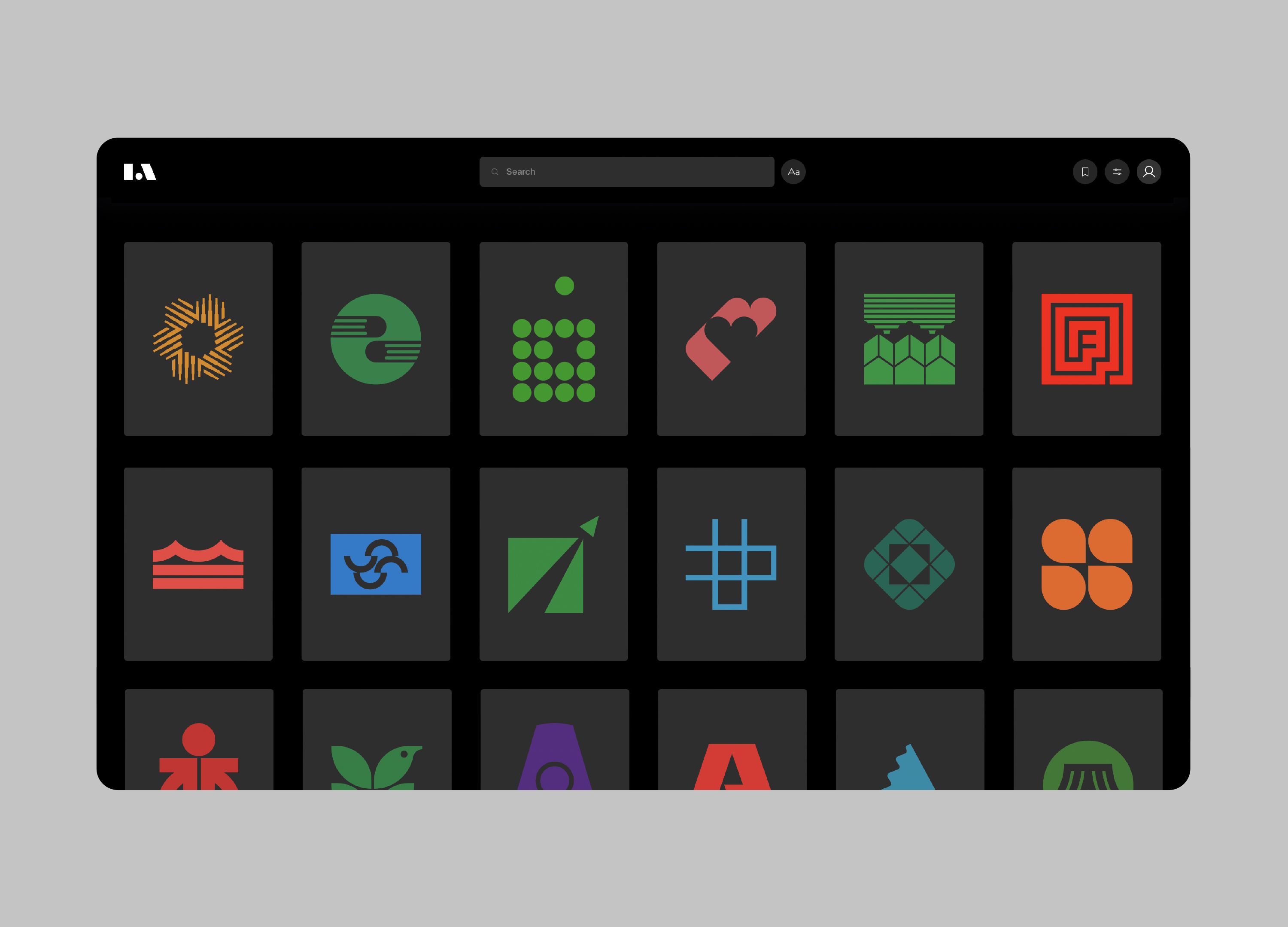
Why does logo design matter and how does LogoArchive help? Today, the logo plays more of a supportive role within corporate identity design, however, it is one of the most flexible assets a brand has alongside a corporate typeface. A well-designed logo can carry with it brand values and persona and transfer these into almost any context, from small scale app icons to large format signage, from specialist use-cases to digital print. Designing a unique, memorable and practical logo (suitable for a multitude of applications) still remains a challenge. LogoArchive intends to, not provide a short cut, but help designers develop a toolbox of form-making techniques from which to develop new logos that are both creative and fit for purpose.
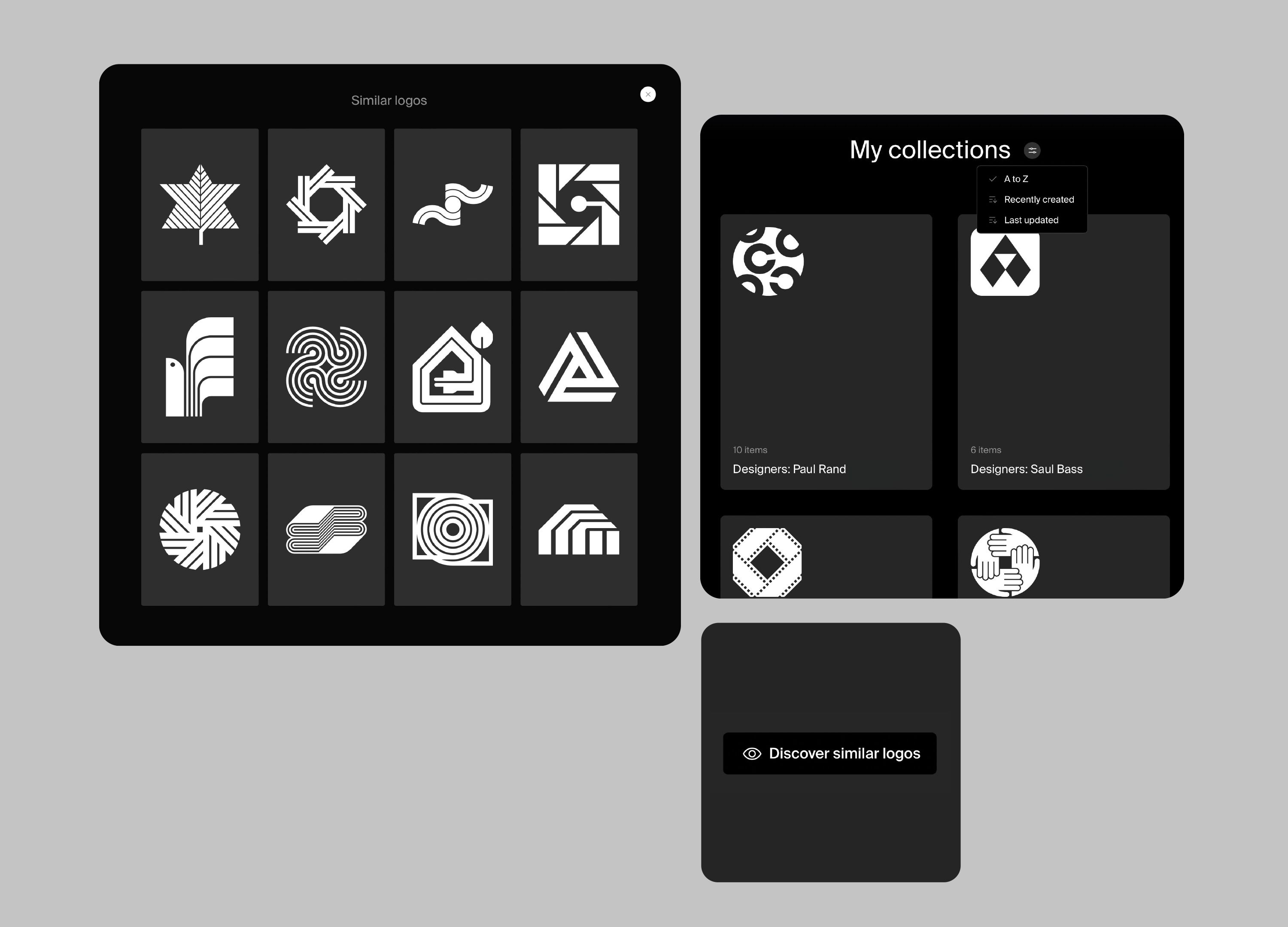
Modernist logos present a synergy of craft, creativity and usability. Indeed, these aren’t always the right solution, there’s certainly no silver bullet, but LogoArchive believes that a modernist approach has the widest possible applications. The contexts and use-cases have vastly multiplied over the last fifty years with the invention of the internet and mobile devices, however, the principles that were established in the past still remain hugely relevant today.
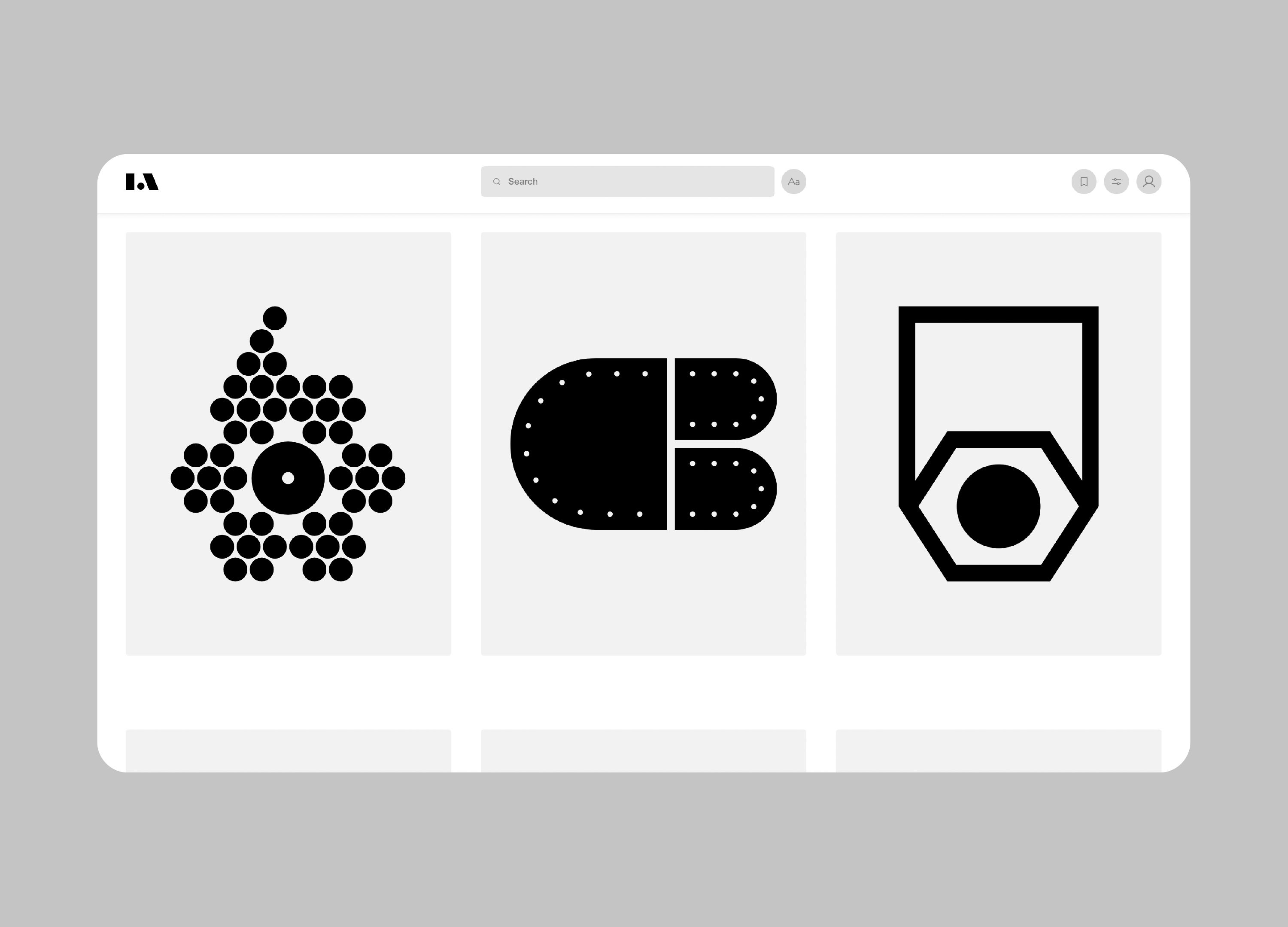
The modernist logos of the past were created with care, creativity and craft. Designers in the 1950s, 60s and 70s had to take their time, and draw all of their production artwork. LogoArchive has taken the same care with digitisation and with the design and functionality of the site. It took two years to build, and the ongoing research, cross-checking and digitisation of individual works can take up to an hour. Support the project by subscribing here.
